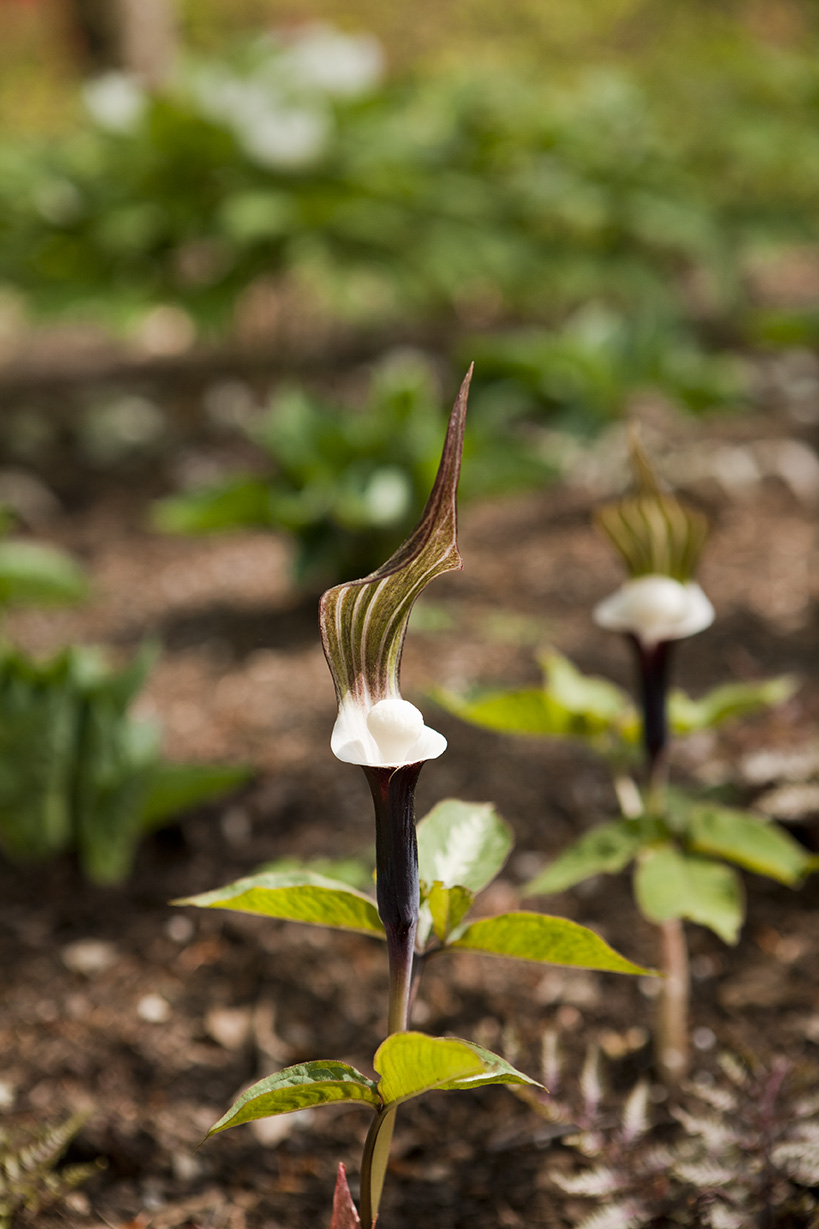Geographic Diversity in the Azalea Garden: Arisaema, Disporum, and Podophyllum
Posted in Gardening Tips on June 2 2011, by Sonia Uyterhoeven

As you stroll through the Azalea Garden you will see a large number of North American native species and their closely related Asian cousins. Many of these plants share a genus, but have different species names. For example, the garden contains many interesting Asian Arisaema commonly known as Jack-in-the-pulpits.
In botanical nomenclature, plants are identified by a two-part, or binomial, name. A plant’s genus denotes that it belongs to one group, while the species name marks it as a member of a sub-group of the genus. There are many Arisaema in the world, yet Arisaema triphyllum refers solely to a specific Jack-in-the-pulpit, one of North America’s native Arisaema.
Why are there so many closely related species on two continents separated by a large ocean? Many of these Asian/North American counterparts come from a common genetic pool. It is possible to imagine that over time seeds have been dispersed by glaciers, wind, birds, or other animals. While this certainly has occurred it would be more likely to have happened on a contiguous landmass.
The most compelling theory for why these closely related floras are found on the opposite sides of an ocean comes from the scientific theory of continental drift, the process by which the continents have moved apart over millions of years. About 250 million to 65 million years ago, during the Mesozoic era, the landmass Pangaea began to split apart; the northern part of the supercontinent broke off into Laurasia (North America and Eurasia). As Asia and North America drifted away from each other, the plants that had been one genus began to evolve. Time, combined with changes in climate, and range fragmentation helped these once related plants to diversify and evolve into new species. Why are there so many Asian Arisaema compared with only two Arisaema native to North America? During the last ice age, parts of eastern Asia remained ice-free. This resulted in a greater diversity in the flora there.
How do botanists know that these plants are closely related? Just looking at the plants can be deceptive, so they also collect evidence from the fossil record and analyze the plants’ genes in order to determine relationships.
In this video Kristen Schleiter, Curator of Outdoor Gardens and Woody Plants, discusses many of the Azalea Garden’s geographically diverse perennials.
Here's a closer look at some of the plants in the Azalea Garden.
